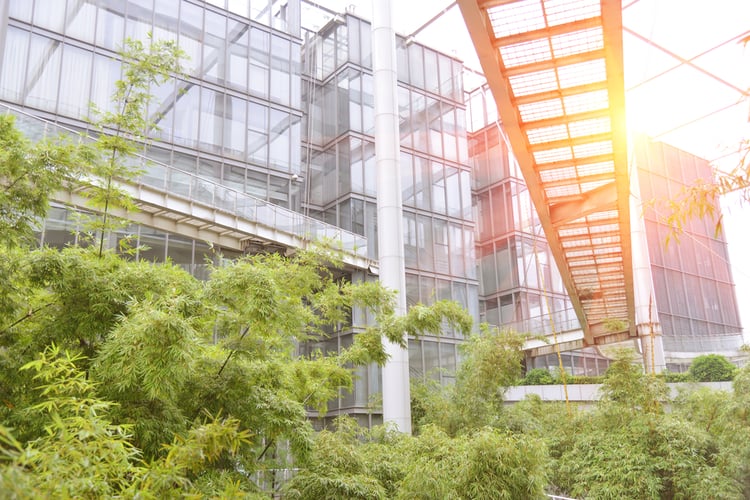Energy Retrofits Will Have a Shorter Payback Period with Local Law 97

A building retrofit can greatly reduce your energy consumption, sometimes by 50% or more. However, there is an additional incentive to make buildings more efficient in NYC - all properties larger than 25,000 sf will be subject to emission limits starting from 2024, and there are hefty penalties for exceeding them.
However, the existence of LL97 also improves the business case for energy efficiency measures. Normally, these building upgrades are analyzed in terms of their upfront cost and energy savings. However, when the avoided penalties are added to the energy savings, the total economic benefit is higher and the payback period becomes shorter.
Reduce your utility bills and building emissions with an energy retrofit.
In this article, we will analyze how the payback period of an energy efficiency project improves when the building emissions law is considered.
Reducing Building Emissions While Saving Energy

To get an accurate calculation of how much a building retrofit can save, you need professional energy modeling services. However, a simplified example can demonstrate how the business case for energy retrofits improves with the avoided LL97 penalties:
- Assume that a 300,000 sq.ft. office building consumes 8,000,000 kWh per year, and 100,000 therms of natural gas per year.
- At 20 cents/kWh and $1.20 per therm, the annual power bill is $1.6 million and the annual gas bill is $120,000. The total energy bill is $1,720,000 per year in this case.
- The company who owns the building is considering an energy retrofit that will achieve savings of 2.5 million kWh and 30,000 therms per year, equivalent to $500,000 in power bills and $36,000 in gas bills ($536,000 in total).
- If this project has a total cost of $3.5 million, the payback period is 6.5 years.
However, the analysis above does not consider the avoided penalties for exceeding the LL97 limit. This building is classified as Business Group B, which has a limit of 0.00846 metric tons of CO2e per square foot. For a 300,000-sf property, the emissions limit is 2538 tCO2e per year.
With 8 million kWh and 100,000 therms of energy consumption per year, the building emissions are 2842.80 tCO2e, exceeding the limit by 304.8 metric tons. Of the total emissions, 2311.70 metric tons can be attributed to grid electricity and 531.10 metric tons can be attributed to natural gas. Since Local Law 97 has a penalty of $268 per metric ton above the limit, this building would be charged $81,685.33 per year starting from 2024.
After the energy retrofit reduces consumption to 5.5 million kWh and 70,000 therms per year, the emissions are reduced to 1961.06 metric tons, which is below the limit for 2024-2029. However, the limit for 2030-2034 is 1359 metric tons, and additional measures will be required by 2030 to avoid penalties.
Adding the Energy Savings and Avoided Penalties

For simplicity, we will assume the energy retrofit is completed just before 2024, when LL97/2019 takes effect. Considering only energy savings, the simple payback period of the project is 6.5 years as calculated above. However, the outlook improves when we consider the avoided penalty of $81,685 per year.
- When the energy savings and avoided penalties are added, the total economic benefit for the building owner is $617,685 per year.
- Considering the project cost of $3.5 million, the payback period is reduced to 5.6 years.
We can also compare the return on investment in both cases. The annual ROI is 15.3% based on energy savings alone, but it increases to 17.6% when considering both energy savings and avoided emissions. The following table compares the annual costs for the building between 2024 and 2029, with and without the energy retrofit project:
|
Scenario |
1) No Retrofit (Business as Usual) |
2) After Energy Retrofit |
|
Electricity bills |
$1,600,000 |
$1,100,000 |
|
Natural gas bills |
$120,000 |
$84,000 |
|
Local Law 97 penalty |
$81,685 |
$0 |
|
Total cost per year |
$1,801,685 |
$1,184,000 |
Over a five-year period, this building would be saving more than $3 million thanks to the energy retrofit project. The avoided penalties become even higher after 2030, since the emission limits are lower than in 2024-2029. The energy savings and avoided penalties can be reinvested, and they can also be used to cover any loans used for energy retrofits.

Michael Tobias
Michael Tobias, the Founding Principal of NY Engineers, currently leads a team of 150+ MEP/FP engineers and has led over 4,000 projects in the US
Join 15,000+ Fellow Architects and Contractors
Get expert engineering tips straight to your inbox. Subscribe to the NY Engineers Blog below.

